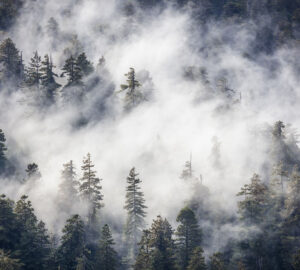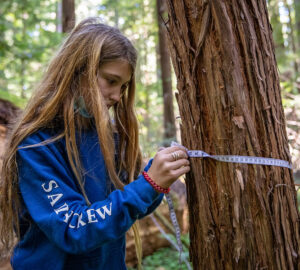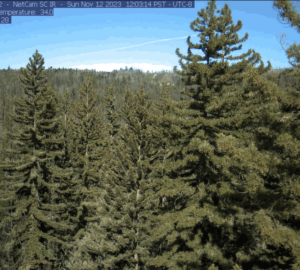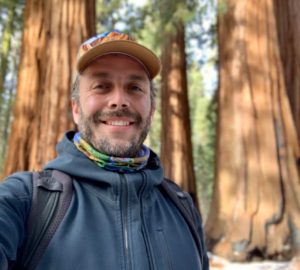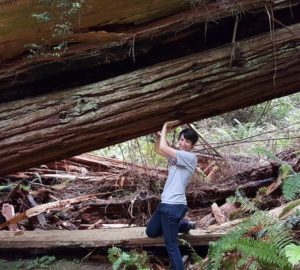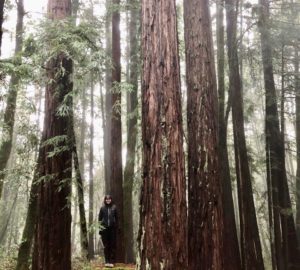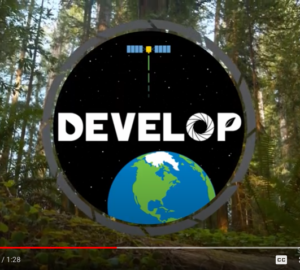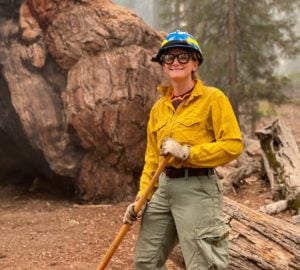Anderson Design Group recently interviewed our senior scientist
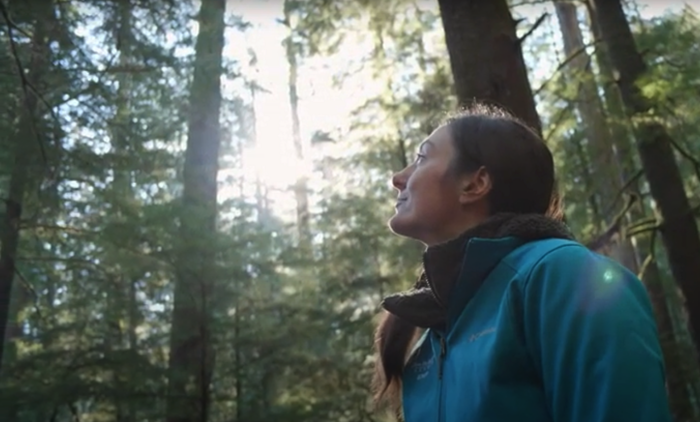
Science informs everything Save the Redwoods League does, from land protection to restoration to nature education. And we’re lucky to have great scientists on staff. That includes Senior Scientist Laura Lalemand, who recently sat down with Anderson Design Group to talk about the League’s work.
Here’s an excerpt of that interview. You can read the full interview here.
ADG: Thanks for sitting down with us, Laura! What is the Save the Redwoods League? If you have an elevator pitch for what your group does, what would that be?
Laura: Thanks for having me! We’re a nonprofit that specializes in coast redwood and giant sequoia conservation. Our work is grounded in science and our three core mandates are Protect, Restore, Connect:
“Protect” involves purchasing properties, including thousands of acres of redwood forest and sequoia groves. We’ve helped create 66 redwood parks and preserves across California. We work to put as much land as possible into conservation protection – whether as a park or reserve – under Native, Tribal, or Indigenous-stewardship, a conservation easement, or under Save the Redwoods League ownership and stewardship. Strong partnerships with public agencies, Tribal partners, and private landowners are a huge part of this work.
“Restore” means we have multiple active restoration programs, including collaborative restoration projects within parks including activities such as removing legacy logging roads, implementing stream restoration, and doing restorative thinning. We take a landscape-scale approach to our work, always working to consider the redwood ecosystem and watershed rather than just the trees.
“Connect” means we implement education programs and support park programs that get people, especially children from underrepresented communities, into the forests. We help fund and organize youth programs like the Redwoods to the Sea program. We also send education staff to schools to teach courses on redwoods and sequoias.
ADG: And I understand your group helps fund and manage research projects. What would an example of such a research project be? And why are research projects in our National Parks and wilderness lands important?
Laura: We have multiple types of research we support. We work with competitive research grants, one for Redwood Research Grants and another for the Student Starter Grants, which are for students from underrepresented groups in STEM. These research grant projects currently range in topics from post-fire recovery in coast redwood and giant sequoia forests, to projects on wildlife like spotted owls and rare salamanders, and to stomata function and fog absorption. We have a small number of in-house researchers, and we also solicit other research groups to partner with us on pressing redwood research questions that we need to inform our work.
Other research projects we are currently funding are our Redwoods and Climate Change Initiative, redwood mortality research, and redwood genome projects. We currently have about 30 research projects in the hopper, with our annual grant cycles.
The more we learn and can answer questions about the forests, the better we can conserve them. We also strive to act as a connector for the researchers. We also try to create opportunities for new redwood researchers. People who are interested in our research grants should check out our Research Grant Program.
ADG: What goes on in the educational side of Save the Redwoods League? What are some of the educational programs your team is invested in?
Laura: We have a K-12 redwoods curriculum we’ve developed. It’s free to the public and can be delivered anywhere in any school. It’s a curriculum about California forests, forestry, conservation, and restoration that we’ve put in partnership with other forest ecologists and educators. It’s great, available to anyone, and can be accessed online. We also have education grant programs (these are non-research grants) where we support and fund youth field trips to outdoor spaces. We also started an educational podcast during the pandemic called “I’ll Go if You Go.” The podcast highlights the many groups who visit the redwoods and what they enjoy about the parks, informing others about the parks and forests and getting them excited to go out and experience them.
To see the full interview with Lalemand, visit Anderson Design Group’s website.

